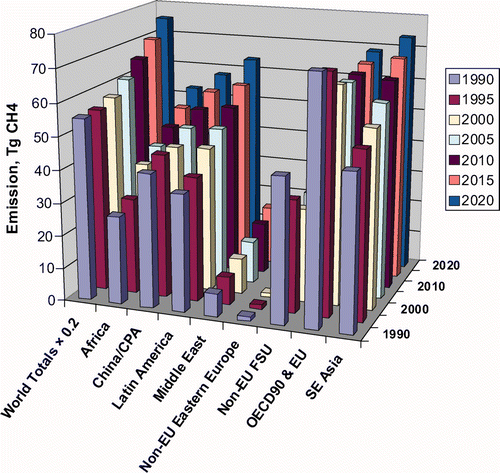Figures & data
Table 1. Representative construction of the global contemporary methane sink and isotope fractionation.a
Table 2. Natural global source scenarios, Nat1 and Nat2.
Table 3. Anthropogenic global source EPA06 for 2000.a

